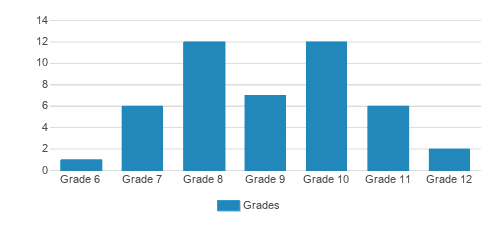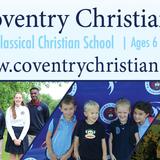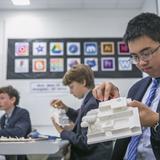The primary purpose of New Life’s Educational Programs is to prepare students to return to public or private schools so that they may complete their courses of study and obtain a diploma.
The student must be able to function in the classroom respecting peers and staff, and must handle tasks in a responsible and competent manner.
To accomplish these goals, New Life seeks to address problems of truancy, school phobia, disrespect, disruption, social dysfunction, responsibility avoidance, lack of credits, and academic depression.
An educational plan is developed from an educational profile which indicates behavioral and academic needs and levels.
Integral to this developmental plan is individual, group and family counseling.
Critical to the student’s success is the posture of the teacher one of counselor, giving encouragement and clear direction, and one of disciplinarian motivating students and holding high expectations.
Students are viewed as an individuals and every reasonable effort is made by the teacher to help them achieve their academic and behavioral goals.
Small class sizes ranging from 8–13 allow teachers to give the necessary attention to the behavior and the academic performance of each student.
Quick Stats (2025)
- School Type: Alternative School
- Grades: 6-12
- Enrollment: 46 students
- Average class size: 4 students
- Application Deadline: None / Rolling
- Source: Verified school update
School Overview
School Type
School Membership(s)School Assoc.
Religious Affiliation
Grades Offered
Grades 6-12
Year Founded
1953
Summer School Offered
Yes
Student Body
Total Students
46 students
Student Body Type
Co-ed
% Students of Color
50%
State avg.: 27%
Students by Grade

Academics and Faculty
Total Classroom Teachers
11 teachers
Student : Teacher Ratio
4:1
National avg.: 13:1
Average Class Size
4 students
Classroom Dress Code
Casual
Tuition and Acceptance Rate
Admission Deadline
None / Rolling
Admissions Director
Tammy Moore
School Notes
- The primary purpose of New Life’s Educational Programs is to prepare students to return to public or private schools so that they may complete their courses of study and obtain a diploma. The student must be able to function in the classroom respecting peers and staff, and must handle tasks in a responsible and competent manner. To accomplish these goals, New Life seeks to address problems of truancy, school phobia, disrespect, disruption, social dysfunction, responsibility avoidance, lack of credits, and academic depression. An educational plan is developed from an educational profile which indicates behavioral and academic needs and levels. Integral to this developmental plan is individual, group and family counseling. Critical to the student’s success is the posture of the teacher one of counselor, giving encouragement and clear direction, and one of disciplinarian motivating students and holding high expectations. Students are viewed as an individuals and every reasonable effort is made by the teacher to help them achieve their academic and behavioral goals. Small class sizes ranging from 8–13 allow teachers to give the necessary attention to the behavior and the academic performance of each student.
Source: Verified school update
Frequently Asked Questions
When is the application deadline for New Life Youth & Family Services?
The application deadline for New Life Youth & Family Services is rolling (applications are reviewed as they are received year-round).
School Reviews
Endorse New Life Youth & Family Services. Endorsements should be a few sentences in length. Please include any comments on:
- Quality of academic programs, teachers, and facilities
- Availability of music, art, sports and other extracurricular activities
- Academic or athletic awards
Recent Articles

A Parent's Guide To Understanding High School Teaching Methods
This comprehensive guide helps parents navigate the various teaching methods used in today's high school classrooms. By understanding these approaches, you'll be better equipped to support your teen's learning journey, communicate effectively with teachers, and create a complementary learning environment at home.

February 08, 2025
Social Emotional Learning: Education's Hidden SymphonyA musician's perspective on Social Emotional Learning reveals how this educational framework orchestrates success through five essential emotional competencies.

January 24, 2025
A Roadmap For Starting A Private SchoolUse this roadmap as a set of talking points with your trusted mentors and professionals to start the private school of your dreams. You're not alone. Over the years, hundreds of folks like you have had the same dream. From Quintilian to Maria Montessori to Lucy Madeira Wing, visionary educators have established schools to teach according to their beliefs and methodologies.

















